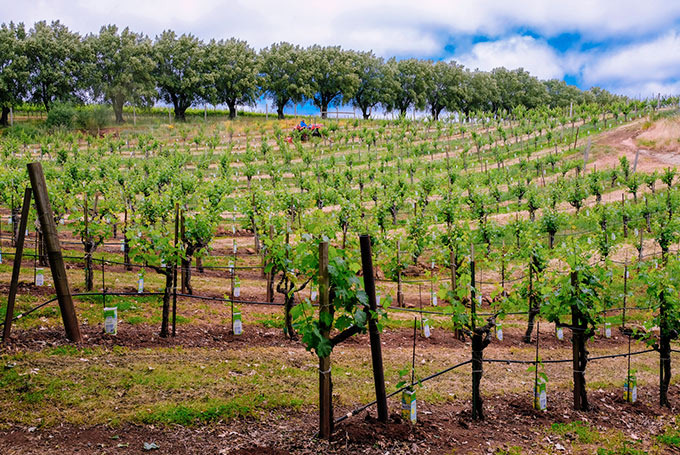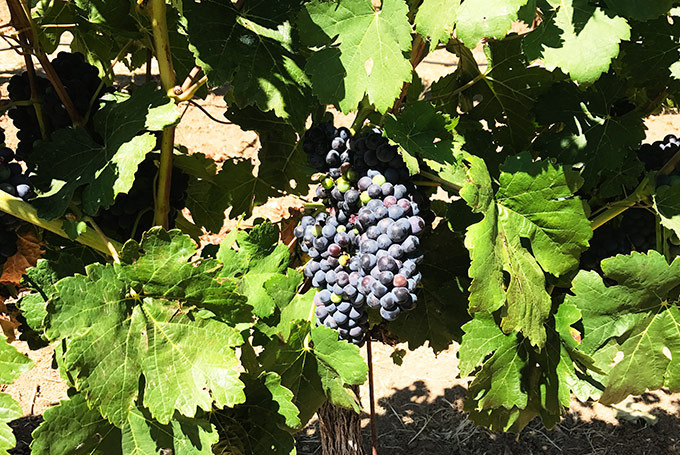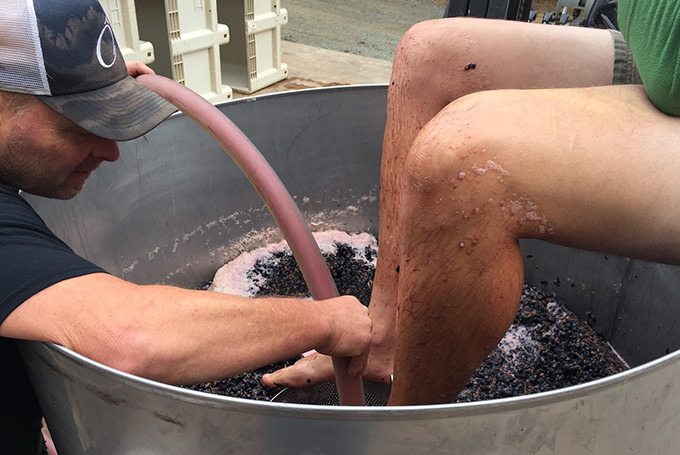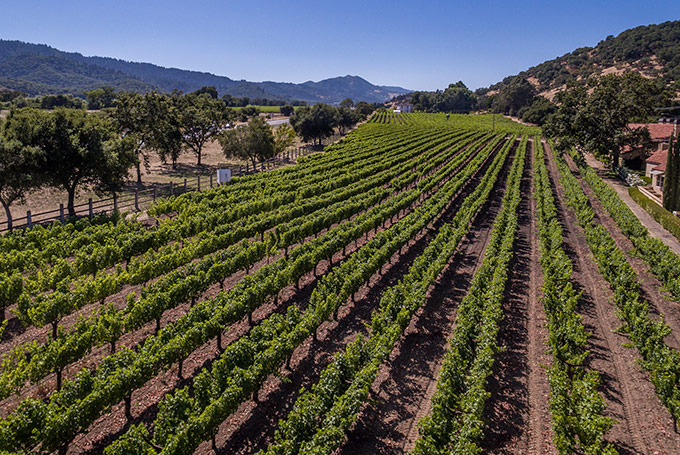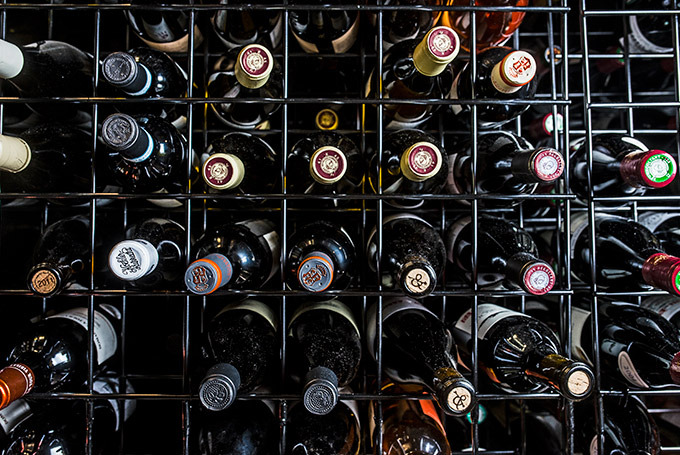Wine Harvest Napa Valley
A behind-the-scenes glimpse of Napa Valley's busy season
Fall to vintners is synonymous with wine harvest. A time when grapes start to ripen, temperatures become slightly cooler and wine country is bustling with activity. It's like the playoffs of winemaking and a beautiful time to visit Napa Valley to see where your favorite iconic wines are made firsthand.
There's a "smell of fermentations permeating the air, waffling over the valley with the intoxicating aromas of another vintage, with the possibility of greatness but promising nothing in surety," Michael Updegraff, managing director at Lail Vineyards, says.
Here, several Napa Valley vineyards and winemakers share insider knowledge of what goes on during harvest.
Veraison
Think of veraison like a metamorphosis stage—where grapes begin to ripen and grow, the vines pump sugar into the fruit, and where the orbs turn from hard green berries to lush-looking grapes. This step is different for every vineyard depending on climate, the location of the vines and so on, but plays a significant role in signaling the start of harvest.
"Each grape varietal ripens at a different rate; some require a longer hang time to produce a ripeness of flavor, color and tannin—some need considerably less," relays Ben Hiza, director of sales and marketing at Dunn Vineyards, who also rolls up his sleeves during harvest.
Photo: Rick Fessenden
The Harvest (Picking and Sorting)
Dunn Vineyards' owner, Randy Dunn, relies solely on his palate for a guide on when to pick grapes. "There is a moment in the grape's development when acid is at its peak and sugar is just about right," Hiza says. "Immediately following this moment, the acid levels in the grape begin to decline, pH levels rise and sugar is less balanced. It is as close to this moment as possible that we like to pick, but the bitterness of the tannin also needs to be resolved and the color needs to be developed."
The catch is that there's no timetable or guide to rely on. "The 'pick decision' is arguably the single most critical decision in all of the winemaking and is equal parts intuition, experience and chemistry (analytics)," Updegraff says. "Most wrong decisions involve picking too early, out of fear and/or panic or other external factors beyond optimum flavors."
Photo: Jenn Rice
Once a winemaker has decided to pick the grapes, the next step is sorting. "The quicker the better when it comes to getting grapes out of the picking bins and into the winery, to minimize oxidation and maximize freshness," Updegraff notes. Though most vineyards use machines to sort through and remove stems, twigs and damaged fruit, some, like Dunn Vineyards, do it directly on-site. "We do not use a sorting table of any type," Hiza says. "Because of this, we process fruit much more quickly than some of our peers."
Crushing and Pressing
A romantic vision of crushing grapes barefoot comes to mind, thanks to movies like A Walk in the Clouds, but is rare in modern-day winemaking (though not unheard of). "For most premium winemaking, grapes are not 'crushed' at all but gently pressed or sent to fermentation tanks as whole berries,"Updegraff explains. Hiza adds that crush, the term, "is used to describe the time of the year when the fruit on the vine is transitioned into the must in the tank that begins fermentation."
Photo: Ben Hiza
Hiza adds, "People still stomp grapes, but it is generally because they don't have other equipment. We made rosé of Peloursin for Retro Cellars last year. We didn't want to remove the fruit from the stems, as we didn't want the wine to receive too much color. But the stems made it difficult to access very much of the juice, so we stomped it by foot."
Fermentation
Component Wine Company's founder, Michael Kennedy, notes that "once the grapes are crushed, the yeast consumes the sugars in the juice, creating the by-products that make wine so much better than grape juice—alcohol! The moment the yeast and sugars meet to create alcohol, other secondary reactions take place as well, creating beautiful and unique flavor compounds."
Photo: Lail Vineyards
Aging and Bottling
"After fermentation, crisp whites will go through fining or stabilization, and prepare for bottling," Kennedy says. "For most reds and certain whites like Chardonnay, a secondary fermentation takes place, converting the sharp malic acid into softer, creamier lactic acid, usually while the wine is in a barrel. This is also the stage in which the wine slowly oxidizes from the porous oak barrel, pulls flavor and tannin from the toasted wood, and continues contact with the dead yeast cells."
Photo: Tasting Table
For Kennedy, this stage is a favorite, as he begins to get an idea of what the wine will taste like as an adult. "After aging is complete—a process that can take years in barrel depending on style—the wine is typically filtered either rough or sterile, and put through the bottling line."
Ready to uncork a bottle yet? We'll be exploring the world of wine all week, uncovering new trends, great wine bars, and tips and tricks you can use all season.
Jenn Rice is a food and travel writer constantly traveling for cheese, tacos and kouign-amann pastries. Follow her on Instagram at @jennricewrites.

